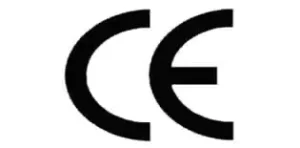

In order to sell electronic/ Wireless products within the EU Regulatory requirements, they should be certified in reference to the relevant legislation under the CE Directives. Else, suppliers can be exposed to fines and blocking in the custom.
This article will touch base of the most relevant directives for EE/ Wireless products:
- EMC – Electromagnetic compatibility Directive
- RED – Radio Equipment Directive
- LVD – Low Voltage Directive (Safety)
- GPSD – Consumers Directive & Recalls
- RoHS – Restriction of the use of certain hazardous substances
- REACH – Exposure to substances ( chemicals )Manufacturers and their supply chain carry a legal liability to follow the relevant directives subjected to their product intend of use and technology.
EMC Directive – EU Regulatory requirements
All electric devices or installations influence each other when interconnected or close to each other, e.g. interference between TV sets, GSM handsets, radios and nearby washing machine or electrical power lines. The purpose of electromagnetic compatibility (EMC) is to keep all those side effects under reasonable control. EMC designates all the existing and future techniques and technologies for reducing disturbance and enhancing immunity.
The electromagnetic compatibility (EMC) Directive 2014/30/EU ensures that electrical and electronic equipment does not generate, or is not affected by, electromagnetic disturbance.The EMC directive limits electromagnetic emissions from equipment in order to ensure that, when used as intended, such equipment does not disturb radio and telecommunication, as well as other equipment. The directive also governs the immunity of such equipment to interference and seeks to ensure that this equipment is not disturbed by radio emissions, when used as intended.
RED – Directive
The radio equipment directive 2014/53/EU (RED) establishes a regulatory framework for placing radio equipment on the market. It ensures a single market for radio equipment by setting essential requirements for safety and health, electromagnetic compatibility, and the efficient use of the radio spectrum. It also provides the basis for further regulation governing some additional aspects. These include technical features for the protection of privacy, personal data and against fraud. Furthermore, additional aspects cover interoperability, access to emergency services, and compliance regarding the combination of radio equipment and software.SAR – Specific Absorption Rate
Whenever the radio device used as a portable device with a distance < 20cm from the user, than SAR tests need to be determined. In any other case SAR assessment still will be needed.
EU Regulatory requirements – Low Voltage & General Product Safety Directives
The low voltage directive (LVD) (2014/35/EU) ensures that electrical equipment within certain voltage limits provides a high level of protection for European citizens.
The LVD covers health and safety risks on electrical equipment operating with an input or output voltage of between:
-50 and 1000 V for alternating current
-75 and 1500 V for direct current
It applies to a wide range of electrical equipment for both consumer and professional usages.
The general product safety directive (2001/95/EC) covers consumer goods with a voltage below 50 V for alternating current, or below 75 V for direct current. It aims to ensure that only safe consumer products are sold in the EU.
Sustainability , Environmental & Recycling Directives:
- RoHS – XRF testing recommended to verify that main elements doesn’t contains concentration of materials above a specific limits.
- REACH – XRF testing recommended to verify that product articles doesn’t contains concentration of chemicals above specific limits.
- WEEE & Batteries – Recycling requests per country.
Other Directives:
Above the mentioned directives above, which are the most common for Electronic products, there are other directives such as Explosive, Medical Device, Lifting, Measurement & control and others. It’s the manufacturers with his supply chain responsibility, to verify the product meets all relevant requirements before putting a product in the market.
360Compliance – REGULATORY TESTING FROM START TO CERTIFICATE
360Compliance provides regulatory Testing & Certification services for hundreds of Hi-Tech manufacturers annually > partial list: https://360compliance.co/customers/
Our offer:
PRICES – FIXED COSTS FROM START TO CERTIFICATE
- Time Frame – the Faster TTM turnaround
- Full project management turnkey.
- Technical Support – Pretesting and debugging
- Testing & Certification – CE, FCC, UL-STD, MiC-Japan, ACMA-Australia, NOM-Mexico, Anatel-Brazil….
- Global Market Access – Covering ~ 195 countries
Feel free to get in touch to provide you initial free of charge consulting to assist you to define the right strategic approach with the faster TTM and the most cost-effective solution.
You may also be interested





